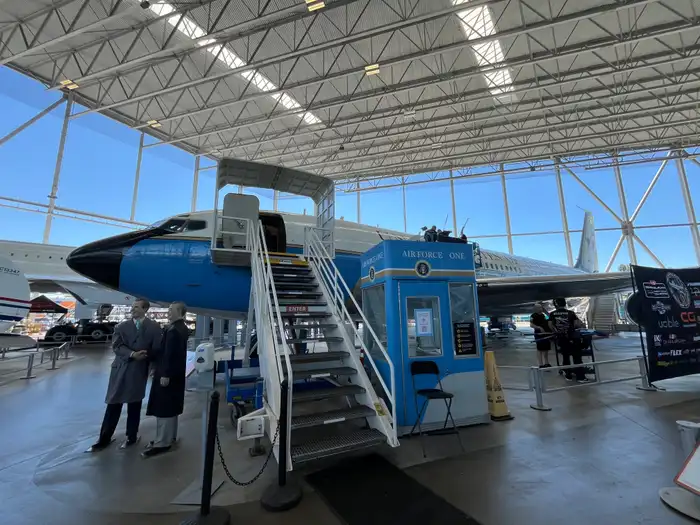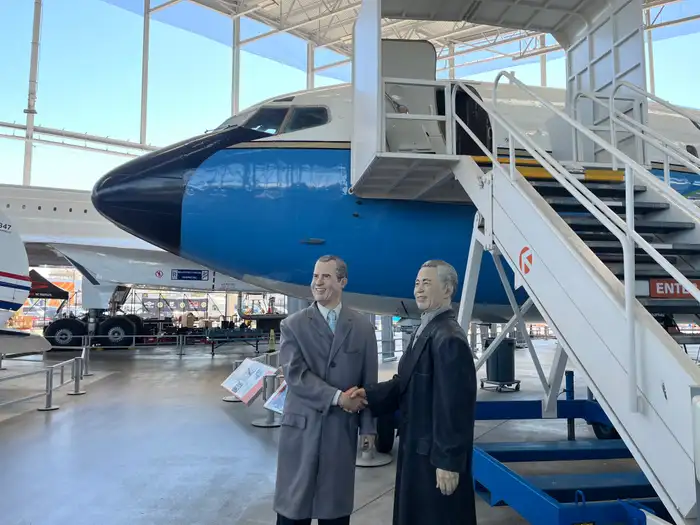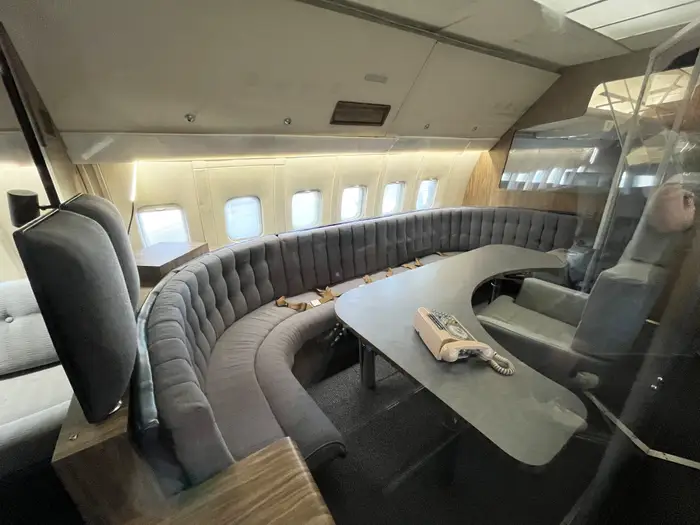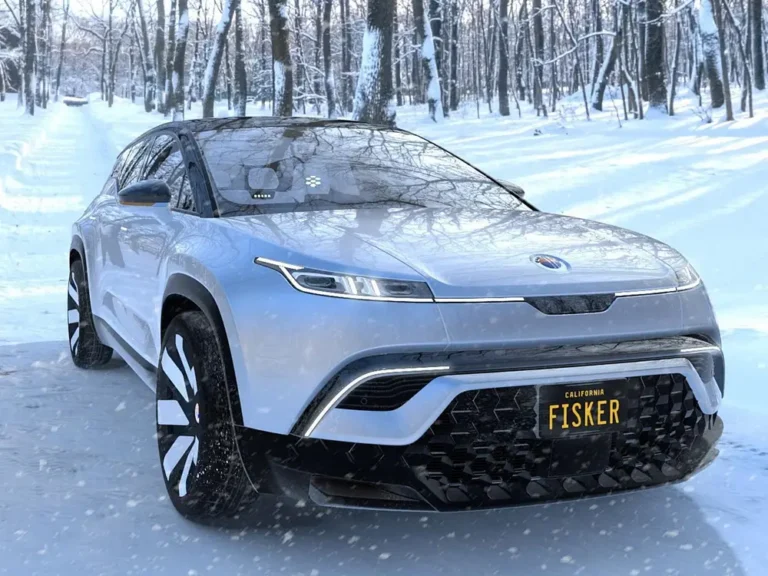I toured an Air Force One plane used by 4 US presidents. Take a look inside the ‘flying Oval Office.’

US presidents used this Air Force One plane from 1959 to 1998.
President Dwight Eisenhower became the first US president to travel by jet when he flew on a new Air Force One plane in 1959.
The jet, known as SAM (Special Air Missions) 970, was customized to meet the needs of the president and White House staff. It included a presidential stateroom, a conference room, seats for members of the press, and a safe for the nuclear codes.
Retired in 1996, SAM 970 now lives at the Museum of Flight in Seattle. I visited the museum in July to tour the old Air Force One and see how presidents once traveled.
Take a look inside.
Four US presidents flew aboard the Air Force One plane known as SAM 970.

SAM (Special Air Missions) 970, a US Air Force jet plane, in 1974.
In 1959, the customized Boeing 707-153 known as SAM 970 became the new presidential aircraft, replacing the propeller-powered C-121C Super Constellation used by President Dwight Eisenhower. SAM 970 was part of the VC-137 series of planes.
SAM 970 was used by Eisenhower as well as Presidents John F. Kennedy, Lyndon Johnson, and Richard Nixon.
In 1962, a newer VC-137C plane replaced it as the primary presidential aircraft, but it still transported vice presidents and other VIPs. The SAM 970 remained part of the presidential fleet until 1996.
The retired aircraft is on display at the Museum of Flight in Seattle.

Air Force One at the Museum of Flight in Seattle.
Admission to the museum costs $26 per adult. Tickets can be purchased on the Museum of Flight’s website.
The exhibit featured figures of Nixon and Premier Zhou Enlai of China shaking hands, recreating the moment the two leaders met.

Mannequins of President Richard Nixon and Premier Zhou Enlai of China.
Nixon took Air Force One to visit China in 1972, becoming the first US president to visit mainland China while holding office.
The cockpit included seats for a pilot, copilot, flight engineer, and guest or auxiliary crew member.

The cockpit of Air Force One
The plane’s maximum speed was 590 miles per hour. The top speed of the current Air Force One, the VC-25A, is 630 miles per hour.
The communication station featured state-of-the-art radio and communication equipment.

The communication station.
From the plane, the president could reach the White House Situation Room and the National Military Command Center and send secret communications.
Across from the communication station, the briefcase containing codes to initiate a nuclear strike was kept locked in a safe.

Inside Air Force One.
Known as the “nuclear football,” every president since Eisenhower has been accompanied by the briefcase at all times.
The safe also held military communication center codes.
In the forward galley, crew members prepared food and drinks for the president and other crew.

The forward galley.
The two galleys on Air Force One included ovens, refrigerators, and open-burner stovetops. Drink dispensers also served coffee, water, and other beverages.
A phone in the crew compartment came with a warning against discussing classified information.

A phone on Air Force One.
A plaque next to the phone read “Caution. This phone has no security provisions. Sensitive or classified material should not be discussed.”
A narrow hallway led to Air Force One’s meeting areas.

A hallway on Air Force One.
Presidents met with staff, received briefings, and took phone calls while traveling on Air Force One, earning it the nickname of the “flying Oval Office.”
The flight crew added fake temperature controls to the presidential stateroom to appease Johnson, who often complained about the cabin temperature.

The presidential stateroom on Air Force One.
Whenever Johnson adjusted the fake temperature dial, it alerted the captain, who could then decide to change the cabin’s temperature or leave it the same, a Museum of Flight guide said.
Johnson had a doggie door installed in the stateroom to accommodate his restless pet beagles.

A doggie door.
Johnson’s beagles would often howl if they were left in the conference room too long, according to the Museum of Flight.
The stateroom room included its own private bathroom.

A lavatory.
The private bathroom was much more spacious than the lavatories used by the flight crew and members of the press.
The presidential conference room featured more space for larger meetings.

The presidential conference room on Air Force One.
The seating booth featured seat belts in case of rough air.
White House staffers and cabinet members who joined the president on trips sat in the staff seating area.

The staff seating area.
The roomy sets of four seats featured tables between them.
A separate secretary station provided more workspace for staff.

The secretary station.
The workstation was outfitted with a lamp and typewriter.
Members of the press sat further back on the plane.

Aisles of seats on Air Force One.
The staff seating area looked the most similar to regular economy cabin seats.
The aft galley in the back of the plane served food and drinks to senior staff and the press.

A galley on Air Force One.
Like the forward galley, the aft galley was furnished with kitchen appliances and drink dispensers.
The tail of the plane was decorated with an American flag.

Air Force One, also known as SAM 970.
First lady Jackie Kennedy chose Air Force One’s blue, white, and metallic color scheme.
President-elect Donald Trump proposed new Air Force One colors of red, white, and navy blue when he was in office in 2019, but the Air Force rejected his design since the darker colors would have cost more and caused overheating issues.





